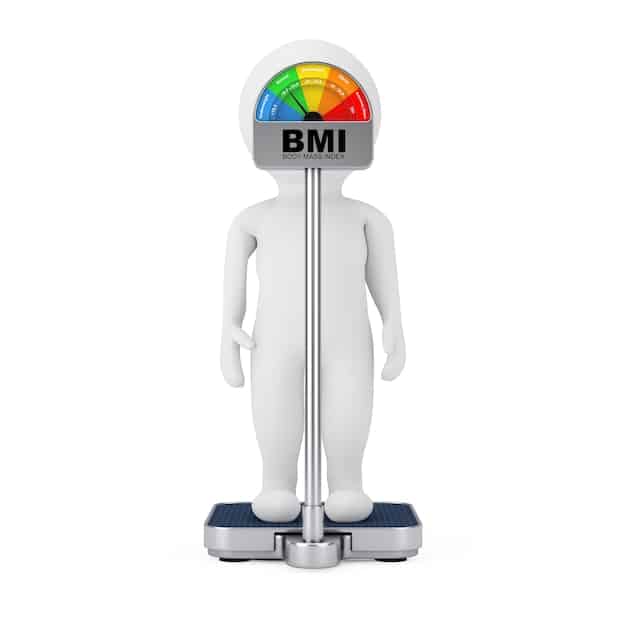Are You at Risk for Diabetes? Early Detection and Prevention Strategies for 2025

Understanding your risk for diabetes is crucial; in 2025, early detection through regular screenings and adopting preventive strategies like balanced nutrition and consistent physical activity are key to mitigating the onset of this chronic condition.
Are you concerned about your risk of developing diabetes? It’s a valid concern, as diabetes affects millions worldwide. In 2025, understanding your risk factors and adopting preventive measures are more important than ever. This article explores are you at risk for diabetes? early detection and prevention strategies for 2025, providing actionable insights to help you stay healthy.
Understanding Diabetes and Its Prevalence
Diabetes is a chronic metabolic disorder characterized by elevated blood sugar levels. This occurs when the body either doesn’t produce enough insulin or can’t effectively use the insulin it produces. Understanding the different types of diabetes and their increasing prevalence is crucial for recognizing your risk.
Types of Diabetes
There are primarily three main types of diabetes: Type 1, Type 2, and gestational diabetes. Each type has distinct characteristics and causes.
Type 1 Diabetes: This type is an autoimmune condition where the body attacks and destroys insulin-producing cells in the pancreas. It usually develops in childhood or adolescence but can occur at any age.
Type 2 Diabetes: The most common form of diabetes, Type 2, is characterized by insulin resistance, where the body’s cells don’t respond properly to insulin. It is often associated with lifestyle factors like obesity and lack of physical activity.
Gestational Diabetes: This type develops during pregnancy in women who didn’t have diabetes before. It usually resolves after childbirth but increases the risk of developing Type 2 diabetes later in life.
- Type 1 diabetes requires lifelong insulin therapy.
- Type 2 diabetes can often be managed with lifestyle changes, oral medications, or insulin.
- Gestational diabetes needs careful monitoring to protect both the mother and the baby.
The prevalence of diabetes continues to rise globally, making awareness and prevention strategies increasingly important.
Identifying Your Risk Factors for Diabetes
Knowing your risk factors is the first step in preventing diabetes. Several factors can increase your likelihood of developing the condition. Awareness of these factors allows for early intervention and management.

Key Risk Factors
Several risk factors contribute to the development of diabetes, some of which are modifiable, while others are not.
Family History: Having a parent, sibling, or other close relative with diabetes increases your risk significantly.
Obesity: Excess weight, especially around the abdomen, is a major risk factor for Type 2 diabetes.
Physical Inactivity: A sedentary lifestyle contributes to insulin resistance and increases the risk of developing diabetes.
Age: The risk of developing Type 2 diabetes increases with age, particularly after 45.
- Regular screening is crucial for those with a family history of diabetes.
- Maintaining a healthy weight through diet and exercise can significantly reduce your risk.
- Staying active helps improve insulin sensitivity and overall health.
By recognizing and addressing these risk factors, you can take proactive steps to lower your chances of developing diabetes.
The Importance of Early Detection
Early detection of diabetes is crucial because it allows for timely intervention, preventing or delaying the onset of complications. Regular screenings can help identify prediabetes or early-stage diabetes, enabling you to make necessary lifestyle changes.
Screening Methods
Several screening methods are available to detect diabetes early. These tests measure your blood sugar levels and assess your risk.
Fasting Plasma Glucose (FPG) Test: Measures blood sugar levels after an overnight fast. A level of 126 mg/dL or higher indicates diabetes.
Oral Glucose Tolerance Test (OGTT): Measures blood sugar levels two hours after drinking a sugary drink. A level of 200 mg/dL or higher indicates diabetes.
A1C Test: Measures average blood sugar levels over the past two to three months. An A1C of 6.5% or higher indicates diabetes.
Random Plasma Glucose Test: Measures blood sugar levels at any time of day without fasting. A level of 200 mg/dL or higher, along with symptoms of diabetes, indicates diabetes.
- The FPG test is a simple and convenient screening method.
- The OGTT is often used to diagnose gestational diabetes.
- The A1C test provides a long-term view of blood sugar control.
Consult your healthcare provider to determine the most appropriate screening method for you based on your risk factors and medical history. Early detection can make a significant difference in managing and preventing diabetes complications.
Lifestyle Modifications for Diabetes Prevention
Adopting healthy lifestyle habits is a cornerstone of diabetes prevention. Simple changes to your diet and exercise routine can significantly reduce your risk of developing the condition. These modifications are effective and sustainable.

Dietary Changes
Making conscious dietary choices can help regulate blood sugar levels and prevent insulin resistance. Focus on incorporating nutrient-rich foods into your diet.
Balanced Diet: A diet rich in fruits, vegetables, whole grains, and lean proteins can help maintain healthy blood sugar levels.
Limit Processed Foods: Reducing the intake of sugary drinks, processed snacks, and fast foods can prevent spikes in blood sugar.
Portion Control: Eating appropriate portion sizes can help manage calorie intake and maintain a healthy weight.
- Choose whole grains over refined grains to stabilize blood sugar levels.
- Incorporate plenty of fiber-rich foods to improve insulin sensitivity.
- Stay hydrated by drinking plenty of water throughout the day.
By prioritizing healthy eating habits, you can effectively lower your risk of developing diabetes. Small, consistent changes can lead to significant improvements in your overall health.
The Role of Physical Activity in Prevention
Regular physical activity is essential for preventing diabetes. Exercise helps improve insulin sensitivity, manage weight, and lower blood sugar levels. Incorporating physical activity into your daily routine offers numerous health benefits.
Types of Exercise
Both aerobic and strength training exercises are beneficial for diabetes prevention. Choose activities that you enjoy and can sustain over the long term.
Aerobic Exercise: Activities like walking, running, swimming, and cycling help improve cardiovascular health and burn calories.
Strength Training: Exercises that build muscle mass, such as weight lifting, can enhance insulin sensitivity and boost metabolism.
Flexibility and Balance: Yoga and Pilates improve flexibility, balance, and overall physical well-being, complementing aerobic and strength training activities.
- Aim for at least 150 minutes of moderate-intensity aerobic exercise per week.
- Include strength training exercises at least two days per week.
- Find activities that you enjoy to stay motivated and consistent.
Regular physical activity, combined with a balanced diet, is a powerful tool for preventing diabetes and maintaining overall health.
Medications and Supplements for Diabetes Prevention
In some cases, medications and supplements may be recommended for individuals at high risk of developing diabetes. These interventions should be discussed with a healthcare provider to determine their appropriateness and potential benefits.
Medication Options
Certain medications have been shown to be effective in preventing or delaying the onset of Type 2 diabetes.
Metformin: Commonly used to treat Type 2 diabetes, metformin can also be prescribed to prevent the condition in high-risk individuals.
Acarbose: This medication slows down the absorption of carbohydrates from the intestine, helping to prevent blood sugar spikes.
GLP-1 Receptor Agonists: These medications help lower blood sugar levels and promote weight loss, reducing the risk of diabetes.
Supplements: Some natural supplements, such as chromium, magnesium, and cinnamon, have been studied for their potential to improve insulin sensitivity and lower blood sugar levels. However, consult your healthcare provider before taking any supplements.
- Medications like metformin can be particularly beneficial for individuals with prediabetes.
- Supplements should be used with caution and under the guidance of a healthcare professional.
- Lifestyle modifications remain the primary focus of diabetes prevention, with medication and supplements serving as adjuncts.
Medications and supplements can play a supportive role in diabetes prevention, but they are most effective when combined with healthy lifestyle choices.
Monitoring and Managing Prediabetes
Prediabetes is a condition where blood sugar levels are higher than normal but not high enough to be diagnosed as diabetes. Monitoring and managing prediabetes is crucial for preventing its progression to Type 2 diabetes.
Strategies for Prediabetes
Individuals with prediabetes can take proactive steps to lower their blood sugar levels and reduce their risk of developing diabetes.
Regular Monitoring: Frequent blood sugar testing helps track progress and identify any concerning trends.
Dietary Changes: Following a balanced diet with limited processed foods and added sugars can help stabilize blood sugar levels.
Physical Activity: Engaging in regular exercise improves insulin sensitivity and promotes weight loss.
Weight Management: Losing even a small amount of weight can significantly reduce the risk of developing diabetes.
- Work closely with your healthcare provider to develop a personalized management plan.
- Attend regular follow-up appointments to monitor your progress and make necessary adjustments.
- Join a diabetes prevention program for additional support and education.
By actively monitoring and managing prediabetes, you can significantly reduce your risk of developing Type 2 diabetes and improve your overall health.
| Key Area | Brief Description |
|---|---|
| 🩺 Risk Factors | Family history, obesity, inactivity, and age all increase diabetes risk. |
| 🍎 Lifestyle Changes | Diet and exercise are the cornerstones of prevention. |
| 🧪 Early Detection | Regular screening helps identify prediabetes early. |
| 💊 Medications/Supplements | Can support prevention but consult a doctor. |
Frequently Asked Questions (FAQs)
▼
Key risk factors include family history, obesity, physical inactivity, age (over 45), high blood pressure, and a history of gestational diabetes. Knowing these can help you take preventive measures.
▼
The American Diabetes Association recommends regular screening starting at age 45, or earlier if you have risk factors like obesity or a family history of diabetes. Consult your doctor.
▼
Adopting a balanced diet rich in fruits, vegetables, and whole grains, engaging in regular physical activity, maintaining a healthy weight, and limiting processed foods can significantly reduce your risk.
▼
Yes, certain medications like metformin have been shown to prevent or delay the onset of Type 2 diabetes in individuals at high risk. Discuss this with your healthcare provider to see if it’s right for you.
▼
Prediabetes is a condition where blood sugar levels are higher than normal but not high enough to be diagnosed as diabetes. It’s managed through lifestyle changes like diet, exercise, and regular monitoring to prevent progression to diabetes.
Conclusion
Understanding your risk for diabetes and taking proactive steps toward prevention are crucial for maintaining long-term health. By adopting healthy lifestyle habits, undergoing regular screenings, and working closely with your healthcare provider, you can significantly reduce your chances of developing diabetes and enjoy a healthier future. Stay informed, stay proactive, and prioritize your well-being in 2025 and beyond.





